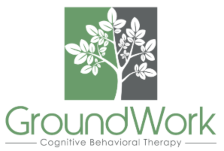Rituals in Childhood: Normal Behavior or OCD Onset?
 Rituals and routines form an integral part of our lives, offering a sense of structure and predictability. For children, these routines can be especially important, helping them to feel secure in their environment. From bedtime stories to morning rituals, these repetitive actions provide a comforting rhythm to a child’s day. However, when do these routines cross the line from being a normal part of childhood to a possible sign of obsessive-compulsive disorder (OCD)?
Rituals and routines form an integral part of our lives, offering a sense of structure and predictability. For children, these routines can be especially important, helping them to feel secure in their environment. From bedtime stories to morning rituals, these repetitive actions provide a comforting rhythm to a child’s day. However, when do these routines cross the line from being a normal part of childhood to a possible sign of obsessive-compulsive disorder (OCD)?
Routine and Childhood
Routine is essential for a child’s development. Consistent routines help children understand what to expect, reducing anxiety and creating a stable environment. Common childhood rituals might include needing a specific stuffed animal to fall asleep, saying goodnight in a certain order, or even wanting to wear the same socks for luck. These behaviors are typically harmless and can even be beneficial.
According to child psychologists, routines can help children develop self-discipline, time management skills, and a sense of responsibility. They encourage consistency and can make transitions smoother, such as moving from playtime to bedtime. However, it is crucial to distinguish these healthy rituals from behaviors that might indicate the onset of OCD.
What is Childhood OCD?
Obsessive-compulsive disorder is a mental health condition characterized by intrusive, unwanted thoughts (obsessions) and repetitive behaviors or mental acts (compulsions) that the individual feels driven to perform. While it’s normal for children to have occasional worries or to double-check things, OCD involves severe anxiety and a significant amount of time spent on these behaviors, which interfere with daily functioning.
According to the International OCD Foundation (IOCDF), over 1 in 100 people worldwide are affected by OCD. It’s important to understand that OCD is not just about being overly organized or meticulous. For children, this can manifest as needing things to be symmetrical or exact, repeated handwashing, or an overwhelming need to confess or seek reassurance.
Differentiating Normal Childhood Behavior from OCD
The challenge for parents is knowing when routines and rituals are indicative of a more serious issue. Here are some key differences to watch for:
- Flexibility vs. Rigidity: Normal routines are flexible. If a child occasionally skips a bedtime story, they adapt without much distress. In contrast, a child with OCD might become extremely anxious or distressed if their ritual is not performed exactly.
- Enjoyment vs. Compulsion: Normal routines are enjoyable or at least neutral. A child might love their bedtime story or the comfort of their lucky socks. With OCD, the rituals are performed to alleviate intense anxiety, not because they bring joy.
- Time Spent: Normal routines take up a small portion of the day. If a child’s rituals are consuming a significant amount of time and interfering with their ability to function normally, this could be a sign of OCD.
- Impact on Functioning: Normal routines should not interfere with a child’s ability to participate in regular activities, such as school, playdates, and family time. If rituals are preventing your child from engaging in these activities, it may be time to seek professional help.
What to Do as a Parent
If you suspect your child’s rituals might be more than just a comforting routine, there are steps you can take as a parent:
- Observe and Document: Keep a diary of your child’s behaviors, noting how often they occur, how long they last, and any associated triggers or consequences. This information can be invaluable when seeking professional help.
- Open a Dialogue: Talk to your child about their routines and how they make them feel. Approach the conversation with empathy and without judgment to make your child feel safe and understood.
- Seek Professional Help: If you are concerned that your child’s behaviors might be indicative of OCD, reach out to a mental health professional. Its important to consult with a therapist specialized not only in pediatrics, but one that also specializes in OCD.
- Educate Yourself: Understanding OCD and its symptoms can empower you to better support your child. Resources like the IOCDF provide comprehensive information.
- Intervene with Care: Avoid punishing or dismissing your child’s rituals. Instead, work with a therapist to develop strategies that gradually reduce the compulsive behaviors while addressing the underlying anxiety.
How We Can Help
While routines and rituals are a normal and often beneficial part of childhood, it’s crucial for parents to remain vigilant for signs that these behaviors might be veering into OCD territory. By understanding the differences between normal routines and OCD, and by taking proactive steps when necessary, parents can ensure their children receive the support they need to thrive.
At Groundwork in Orlando, our child OCD therapists can help answer the question of “is this OCD? or something else?” and provide expert guidance for parents and children alike. Contact us to learn more about our specialized services for OCD in children and adolescents. Remember, early intervention is key in managing OCD and helping your child lead a healthier, happier life.

